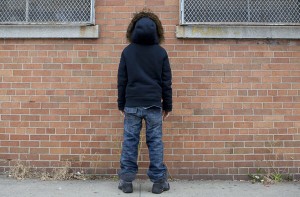Two weeks ago the City Limits newspaper published a series by Rachel Blustain on what she termed, “broken adoptions” – that is, adoption dissolutions.

Photo by Marc Fader for City Limits.
The numbers of how many adoptions fail is a tough statistic to obtain, in part because many adoption dissolutions occur years afer an adoption has been finalized; families move, they may not seek help, and the agencies that facilitate the adoption do not always know when the adoption is dissolved. In addition, there is no centralized mechanism for obtaining adoption data.
The series began with the story, “Growing Concerns over Broken Adoptions” in which featured one young woman who was adopted at age 7, only to be abandoned and put back into the foster care system by her adoptive mother at age 13.
The difficulty in obtaining solid numbers about adoption dissolutions is the focus of the second article, “Adoption Numbers in Question.” Social service agencies that serve children report that anywhere from 5 to 25% of the kids they serve involve adopted children re-entering out-of-home care.
The third article, “From an Option to a Mandate” explores what happens when adoption is the permanency emphasis without the needed post-adoption services to support the families.
In “Solutions to Broken Adoptions May Lie in “Gray” Areas,” a discussion of a different conceptualization to permanency is introduced – one that is flexible, allows children to stay connected with biological family in one way or another, and focusing on the needs of the child rather than agencies, workers and parents.
Finally, the story of one child, S.D., and her attorney who advocated against her adoption, is told in “One Foster Child’s Choice: Not to be Adopted.” I found the most compelling statement in this piece to be the last paragraph.
When Zimmerman went to court to argue against adoption for S.D., he had no fantasy of a happily ever after. “It was not a slam dunk,” he recalls. Still, Zimmerman says, when he convinced the judge to let S.D. remain in foster care for the remainder of her childhood, he felt that he had done the best he could for his client as an individual, not as a permanency statistic.